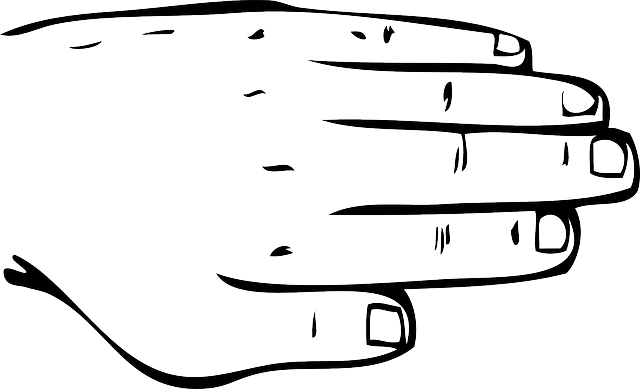Warts, caused by HPV, can be unsightly and uncomfortable. Modern treatments offer swift, pain-free removal with minimal discomfort, replacing harsh traditional methods. Topical creams, laser treatments, and other advanced solutions ensure patient comfort and reduce scarring risk. Post-removal care is vital to prevent recurrence; keep treated areas clean, protect them from moisture, and regularly check for new warts.
Looking for fast, efficient, and Pain-free wart removal? Achieving clear, smooth skin is now easier than ever with modern treatments. This comprehensive guide explores effective methods to eliminate warts, from understanding their causes to comparing traditional versus innovative techniques. We delve into key considerations for a comfortable experience and highlight top topical solutions. Plus, discover post-removal care tips to prevent recurrences. Find the perfect solution for flawless skin!
- Understanding Warts and Their Causes
- Traditional vs Modern Wart Removal Methods
- Key Considerations for Pain-Free Options
- Topical Treatments for Effective Results
- Preventing Recurrence: Post-Removal Care Tips
Understanding Warts and Their Causes
Warts are small, rough growths that typically appear on the skin and are caused by the human papillomavirus (HPV). They can be distressing due to their unsightly appearance and potential discomfort, especially if they occur in areas subject to friction or pressure. Understanding how warts form is key to effective Pain-free wart removal. HPV infects the skin’s top layer, leading to the formation of these growths. Various types of warts exist, each with distinct characteristics—common warts often appear on the hands and feet, while genital warts are transmitted through sexual contact.
Despite their ability to cause mild irritation, many warts disappear naturally without treatment. However, for those seeking swift and efficient pain-free wart removal, modern solutions offer effective alternatives to traditional methods that can be time-consuming and uncomfortable. Advanced treatments now available target HPV directly, providing faster results with minimal side effects. These innovative approaches ensure clear skin without the usual associated pain, revolutionizing how we manage warts in today’s digital age.
Traditional vs Modern Wart Removal Methods
In the realm of skincare, the approach to removing warts has evolved significantly over time, offering both traditional and modern methods for pain-free wart removal. The conventional method often involves harsh chemicals or surgical excision, leaving behind potential discomfort and scarring. However, the advent of new technologies has introduced more gentle alternatives.
Modern medicine now provides a range of options, from topical creams that use natural enzymes to dissolve warts, to advanced laser treatments that target and eliminate them without invasiveness. These contemporary approaches prioritize patient comfort and minimize side effects, ensuring clear skin with reduced risk of scarring.
Key Considerations for Pain-Free Options
When considering pain-free wart removal options, it’s crucial to explore modern, minimally invasive techniques that offer effective results without causing discomfort or leaving scars. Traditional methods like cryotherapy can be painful and may not always guarantee complete wart elimination. Therefore, many people are turning to alternative solutions.
One key consideration is the use of topically applied medications. Salicylic acid and podophyllotoxin are commonly used for their ability to soften and dissolve warts over time. These options are usually easy to apply at home, providing a convenient and relatively pain-free approach. Additionally, newer technologies like laser treatments or radiofrequency ablation offer precise targeting of the wart, minimizing damage to surrounding skin while effectively removing the growth.
Topical Treatments for Effective Results
Topical treatments offer a fast and pain-free way to remove warts, providing effective results without the need for invasive procedures. These treatments work by targeting and dissolving the wart’s core while safely shedding the affected skin cells. One popular option is salicylic acid, which comes in various concentrations and is applied directly to the wart. This acid gently exfoliates the skin, allowing new, healthy skin to grow in its place.
Another effective topical treatment is cryotherapy, where a liquid nitrogen spray is used to freeze and destroy the wart. This method is quick and often provides permanent results. Additionally, certain medications like imiquimod can stimulate the body’s immune system to fight off the wart naturally. These topical treatments are easily accessible, user-friendly, and offer significant advantages for those seeking pain-free wart removal for clear skin.
Preventing Recurrence: Post-Removal Care Tips
To prevent warts from returning after pain-free removal, proper post-care is essential. First, keep the treated area clean and dry; wash it gently with mild soap and water, avoiding harsh scrubs that could irritate the skin. After cleaning, thoroughly dry the region, ensuring no moisture remains to support wart regrowth.
Additionally, consider applying a topical over-the-counter (OTC) medication or using natural remedies like apple cider vinegar or salicylic acid to help prevent new warts from forming. Using a protective bandage for a few days after removal can also safeguard the area and reduce the risk of touching or spreading the virus to other parts of your body or others. Regularly checking the skin for any signs of new warts is vital, enabling prompt action if recurrence occurs.
Fast and efficient pain-free wart removal is achievable with modern, effective treatments. By understanding wart causes and exploring both traditional and modern methods, you can choose the best approach for clear, smooth skin. Key considerations include selecting topically applied solutions for minimal discomfort and preventing recurrence through proper post-removal care. With these strategies in place, achieving and maintaining clear skin is within reach.
